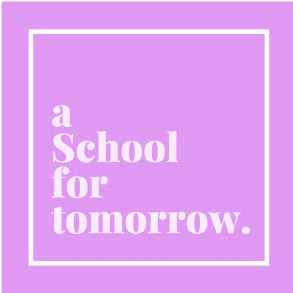Game Changers | Lead | School Strategy
Showing the Way of School Strategy
Showing the way is the final piece in building strategic competency. If we understand who we need to be and what we need to do, then build the intent and plans by which this might happen, then we need also to model how this works in practice in little and great ways for the community around us.

It is an essential aspect of strategic leadership in a school, for if we do not show the way, then how can expect people to find it themselves? It is more than just leadership by example, although this is a crucial aspect of it. It is, perhaps most of all, about how we construct the compelling narrative that invites people to join us on a journey from yesterday to today to tomorrow.
Strategic fluency means helping a community understand the vision, vocabulary of a fit for purpose 21C learning culture. B Davies in 'Rethinking Strategy and Strategic Leadership in Schools' (2003) notes that "How groups and organisations engage in strategic conversations and the quality of those conversations is the foundation of strategic thinking". Schools that spend all of their time down in the weeds of the everyday lose the ability to connect what they are doing with why they are doing it. They run the risk of institutionalising ritual without meaning – the doing of things for the sake of doing, rather than for a particular purpose. Even worse, under such conditions, the moral purpose of a school can become ambushed by individual and factional self-interest and by the politics that accompanies these normal but corrosive human activities. Your role in strategic fluency, therefore, is to promote conversations and understanding through a shared language that aligns people to purpose, purpose to strategy, strategy to operations and systems, and operations to enduring culture. For in this way, the right culture becomes the vehicle for perpetuating the desired strategy.
Strategic stewardship means providing long-lasting homes for fit for purpose 21C learning. Your role in this respect is to provide adequate appropriate resources now and in the future to build homes for the learning that needs to occur in your school. Schools are not like other businesses and they do not operate simply according to the typical annual cycles of the financial year. When we build schools, we build them to last. It is much more common for a school to last for fifty or hundred years or more than it is for other types of business that wax and wane much more quickly. The currency of school longevity and health is invariably a combination of relationship and reputation. Wise strategic stewardship recognises, therefore, that financial and material capital alone are not enough to help a school to move forward with confidence. Human capital and character capital are paramount, especially in doing what schools do best – growing people. To this end, a school will need to manage opportunity and risk to construct the physical, notional, and virtual spaces in which, people, values, and concepts can connect through a unifying and sympathetic aesthetic and a compelling educational narrative that links yesterday to today and tomorrow. This requires an appreciation of dimensions of stewardship that take imagination, energy, and breadth of perspective (as well as resourcefulness) to fulfil:
-
Conceptual and practical
-
Physical and aesthetic
-
Emotional and cognitive
-
Aspirational and evaluative
Schools are not like other businesses and they do not operate simply according to the typical annual cycles of the financial year. When we build schools, we build them to last.
The natural consequence of strategic stewardship is strategic durability which means providing sustainability to and within schools. Your role within this is to model lasting leadership practice in a changing landscape. Andy Hargreaves and Dean Fink lay out in Sustainable Leadership (2006) how this applies in practice through six key concepts:
- Depth: Delivering leadership for the fundamental moral purpose of deep and broad learning while caring for and among others
- Length: Meeting the challenges of leadership succession, of leading across and beyond individual leadership over time
- Breadth: Empowering distributed leadership that encompasses what leadership might deliberately become
- Justice: Delivering socially just leadership that shares knowledge and resources with the community
- Diversity: Promoting cohesive diversity and networking among the community’s varied components
- Resourcefulness: Supplying prudent and resourceful leadership that both recognises talent early and wastes neither people nor money
- Conservation: Ensuring steadfast preservation of long-standing purposes and honourable traditions
At the same time, the longevity promoted by strategic durability promotes the likelihood of strategic traction: client and community engagement. Brad Entwistle, an industry-leading school marketer and founder of the ImageSeven agency, has commented passionately in this respect: “With my hand on my heart, I implore you not to spend any further money on marketing until you have clearly defined who your ideal customer is. Where do they live? What is their worldview? What are their aspirations for their children's future? Get agreement from your team and then ensure every decision you make is in alignment with your target market.” Your role therefore is to know your current and future target market intimately.
The key to building a vision of a school for the future that connects intimately with your target market starts with painting a picture of their preferred aspirations for the outcomes of learning and the needs that will arise from this. In this way, education – the core business – should drive the environment and community that it will both inform and inhabit. This necessitates asking important questions:
- How do students in our school learn, think and feel?
- How should students in our school learn, think and feel?
- What aspirations could our students have for their futures?
- What aspirations should our students have for their futures?
- How might we do things in our school to allow our students to become the adults they should become within the following areas:
- Curriculum and co-curriculum?
- Learning and teaching?
- Pastoral care, wellbeing, welfare, and social-emotional development?
- Spiritual development?
- What enduring values and honourable traditions do we have that will help us to achieve our mission?
- How can our systems sustain and nurture the culture, educational programs, reputation and business viability of our school:
- Brand development and maintenance?
- School development?
It also requires us to think about at least three different ways of telling the story. We can think about it being strategically-envisioned and structured. Showing the way in this sense is about demonstrating how the school is acting strategically, defining aspirations, building culture, and extending boundaries. At the same time, we can also think about it being mission-aligned – a journey from heart (culture, people, commitment, networks, communications, growth, and development) to head (rationale, mission, vision, values, brand, and philosophy) to shoulders (expectations, systems, structure, plans, policies, processes, and protocols) to hands (operations, curriculum and co-curriculum, programs and initiatives, research and development, community engagement, accountability and review).
Strategic competency is the way we bring dreams of what a 21C school education might be into reality.






